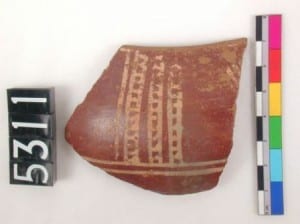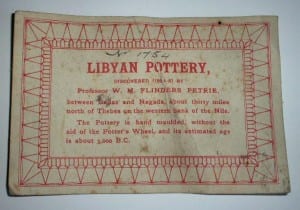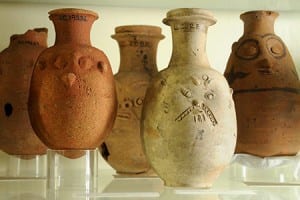Guest Blog by Grazia di Pietro
In the second in our series of different perspectives on Egyptian pottery Dr Grazia di Pietro, UCL Marie Curie Research Fellow, looks at what we can learn from incomplete fragments of prehistoric pottery.
For museum curators finding room in a gallery for exhibiting nice whole pots can be as challenging as trying to answer questions like: “What was their function, context of use, symbolic meaning?”. Answering these questions is also one of the objectives of pottery specialists researching in field projects or in ceramic analysis laboratories. However – needless to say – the pottery they have to deal with is often very different from what can be observed in a museum case.
Let’s go back for a moment to the initial issue: finding space for our pots! Well, they would occupy less room if broken in small pieces and (obviously) even less space if some of these potsherds were discarded or piled in a corner, irrespective of their previous location and sorting… We would eventually have created something similar to that which archaeologists frequently face in an excavation: tons of broken vessels (but still with great informative potential!).

Pottery piece: Rim sherd with red polished surface and white painted decoration (Petrie’s “Cross-Lined ware” C-Ware)
(more…)
 Close
Close





